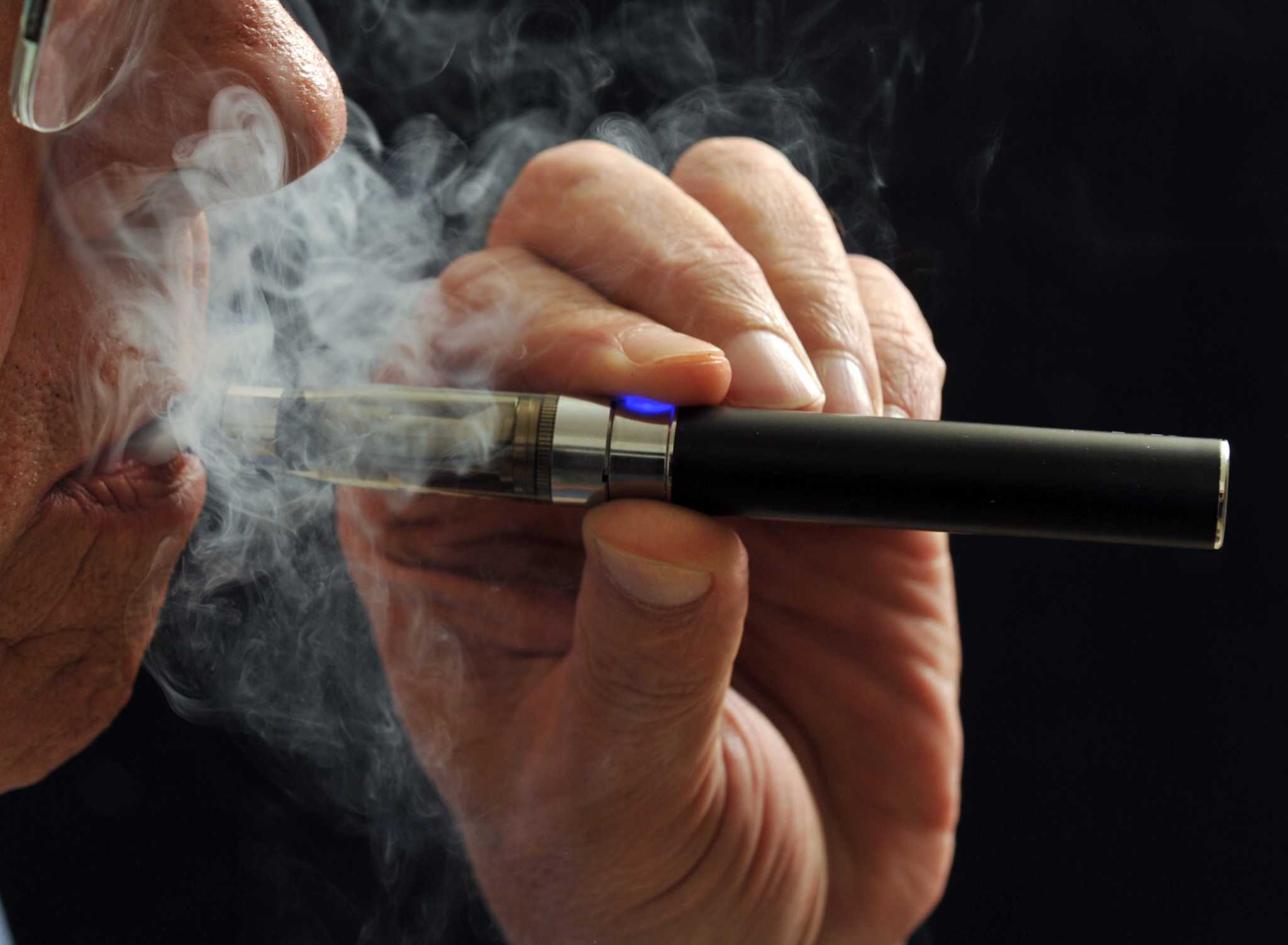E-cigarettes have become increasingly popular as an alternative to traditional smoking, with many people believing them to be a safer option. However, the truth is that e-cigarettes pose several health risks that are often overlooked. In this article, we’ll explore the 10 dangers of e-cigarettes, from harmful chemicals to the long-term effects on the lungs and heart. As a wholesaler or retailer in the e-cigarette industry, it’s crucial to understand these risks, as they can impact not only the health of your customers but also the future of your business. Let’s dive into the facts that every responsible supplier should know.
10 Dangers of E-Cigarettes You Need to Know
1. Nicotine Addiction
Nicotine is the primary addictive substance in e-cigarettes. It can lead to dependence and make quitting difficult. Prolonged use can cause users to experience cravings, irritability, and difficulty concentrating. Over time, nicotine addiction can affect brain development in young people and increase the risk of mental health issues.
2. Respiratory Issues
Inhalation of e-cigarette vapor can irritate the lungs and airways, leading to symptoms such as coughing, wheezing, and shortness of breath. Long-term use may increase the risk of chronic respiratory conditions like bronchitis, asthma, and chronic obstructive pulmonary disease (COPD).
3. Potential for Explosions and Fires
E-cigarette devices, especially low-quality ones, are prone to malfunctions, including battery failures that can lead to explosions and fires. There have been numerous incidents of e-cigarettes catching fire or exploding while charging or during use, resulting in serious injuries.
4. Unknown Long-Term Health Effects
While e-cigarettes are relatively new, the long-term health effects of their use are not fully understood. Studies have yet to reveal the full extent of the risks associated with prolonged exposure to e-cigarette vapor, especially regarding the chemicals that form during the heating process.
5. Harmful Chemicals in the Vapor
E-cigarette vapor contains potentially harmful chemicals like formaldehyde, acetaldehyde, and acrolein, which are known to cause respiratory problems and may increase the risk of cancer. These chemicals are created when the e-liquid is heated to high temperatures, and their concentration can vary depending on the device and the e-liquid used.
6. Increased Risk of Heart Disease
Nicotine and other chemicals in e-cigarettes can increase heart rate and blood pressure, which can lead to a higher risk of heart disease over time. Studies have shown that nicotine may contribute to the thickening of the blood vessels, raising the likelihood of strokes, heart attacks, and other cardiovascular problems.
7. Exposure to Secondhand Vapor
While e-cigarettes do not produce smoke in the traditional sense, the aerosol they emit can still expose non-smokers to harmful chemicals. Secondhand vapor contains nicotine and other toxic substances, which can pose risks to individuals in close proximity to e-cigarette users, particularly in enclosed spaces.
8. Risk to Youth and Adolescents
E-cigarettes are especially popular among young people, many of whom may start using them as a gateway to smoking traditional cigarettes. Nicotine exposure during adolescence can harm brain development, leading to memory problems, difficulty concentrating, and an increased risk of mental health disorders.
9. Unregulated Products
In many regions, e-cigarettes and e-liquids are not strictly regulated, which can lead to quality control issues. Some e-liquids have been found to contain harmful substances like diacetyl, a chemical linked to “popcorn lung” (bronchiolitis obliterans), a serious lung condition. Additionally, poorly manufactured devices may not meet safety standards, leading to dangerous malfunctions.
10. Impact on Oral Health
Using e-cigarettes may cause dry mouth, gum irritation, and an increased risk of tooth decay. The chemicals in e-cigarette vapor can affect the tissues of the mouth and lead to inflammation of the gums and tongue. Over time, this could result in more serious dental issues, such as gum disease and tooth loss.
E-Cigarettes vs. Traditional Cigarettes: The Key Differences
In this section, we’ll explain the fundamental differences between e-cigarettes and traditional cigarettes. E-cigarettes work by heating a liquid (often containing nicotine) to create vapor, while traditional cigarettes release harmful substances by burning tobacco. Understanding how these two products work is essential, as it directly impacts their associated health risks.
How E-Cigarettes Work:
E-cigarettes contain a liquid known as “e-liquid” or “vape juice,” which is heated by a coil to produce vapor that the user inhales. The e-liquid usually contains a combination of nicotine, propylene glycol, vegetable glycerin, and flavoring agents.
How Traditional Cigarettes Work:
Traditional cigarettes involve the combustion of tobacco, which produces smoke that contains a variety of harmful chemicals, such as tar, carbon monoxide, and formaldehyde. These chemicals are harmful to nearly every organ in the body and are linked to severe health issues, including cancer and heart disease.
Key Differences:
| Aspect | E-Cigarettes | Traditional Cigarettes |
|---|---|---|
| Method of Delivery | Vaporization of e-liquid | Combustion of tobacco |
| Main Ingredients | Nicotine, propylene glycol, glycerin, flavoring agents | Tobacco, tar, carbon monoxide, formaldehyde |
| Health Risks | Potential harm from nicotine and chemicals in the vapor | Known risks of cancer, lung disease, heart disease |
| Secondhand Exposure | Minimal, but still poses risks | Highly harmful to those exposed to smoke |
Health Risk Implications:
Although e-cigarettes are often marketed as a safer alternative to smoking, they still carry health risks. The vapor produced by e-cigarettes can contain harmful substances, such as nicotine, which can affect the cardiovascular and respiratory systems. On the other hand, traditional cigarettes pose well-documented, severe risks due to the combustion process and the toxins it releases.
Understanding these key differences is essential for wholesalers and retailers, as it helps in educating customers about the comparative risks of e-cigarettes and traditional smoking products.
Do E-Cigarettes Contain Harmful Substances?
Many people believe that e-cigarettes are completely harmless, but in reality, the liquid used in e-cigarettes (often referred to as e-liquid or vape juice) may still contain harmful substances. Key ingredients such as nicotine, propylene glycol, and glycerin, while generally recognized as safe in some forms, can potentially produce toxic compounds when exposed to high heat. In this section, we will examine the harmful substances that may be present in e-cigarettes and explore their potential health impacts.
Harmful Substances Found in E-Cigarettes:
| Substance | Potential Risk | Health Implications |
|---|---|---|
| Nicotine | Highly addictive | Can lead to addiction, increased heart rate, and high blood pressure. May affect brain development in adolescents. |
| Propylene Glycol | Chemical often used as a solvent in e-liquids | Can irritate the respiratory system and may cause throat irritation. Prolonged exposure can lead to breathing problems. |
| Vegetable Glycerin | Common base for e-liquids | Generally considered safe, but inhaling in large quantities can cause lung irritation and dehydration. |
| Acetaldehyde | A byproduct of heated e-liquid | A toxic chemical that can contribute to lung and respiratory issues. Known carcinogen. |
| Formaldehyde | Another byproduct of heating e-liquid | A known carcinogen that can cause respiratory problems and increase cancer risk. |
| Acrolein | A product of overheating e-liquid | Can cause irritation of the eyes, nose, and throat, and may lead to long-term respiratory damage. |
How These Substances Become Harmful:
When e-liquid is heated by the device’s coil, certain chemical reactions can occur that produce harmful byproducts like formaldehyde, acetaldehyde, and acrolein. These chemicals are not found in the e-liquid itself, but form as a result of the high temperatures used in the vaporization process. Studies have shown that, depending on the temperature and the composition of the e-liquid, these toxic substances can be present in varying amounts.
Health Risks of Inhalation:
- Nicotine Addiction: Nicotine is the primary addictive substance in e-cigarettes, and its presence can lead to dependence, making it difficult for users to quit.
- Respiratory Issues: The inhalation of propylene glycol, glycerin, and other chemical byproducts can lead to irritation of the respiratory tract, potentially causing chronic conditions like bronchitis or asthma.
- Cancer Risk: Substances like formaldehyde and acetaldehyde are known carcinogens, increasing the risk of lung cancer with prolonged exposure.
Understanding the potential for harmful substances in e-cigarettes is vital for wholesalers and retailers, as it helps inform customers about the risks of vaping. While e-cigarettes may present a reduced risk compared to smoking, they are not without their own dangers.
The Long-Term Health Impacts of E-Cigarettes
While e-cigarettes may pose less immediate harm compared to traditional cigarettes, their long-term health effects are still not fully understood. The use of e-cigarettes has only become widespread in recent years, and the research on their long-term impact is ongoing. However, early studies and clinical observations have begun to shed light on potential health risks. In this section, we will review the existing research and discuss the potential long-term effects of e-cigarette use on the heart, lungs, and other key health indicators.
Long-Term Effects on the Heart:
E-cigarettes contain nicotine, a substance that is known to affect the cardiovascular system. Nicotine causes blood vessels to constrict, which can raise blood pressure and increase the risk of heart disease. Long-term exposure to nicotine from vaping could lead to the development of cardiovascular issues similar to those seen in traditional cigarette smokers.
Key Findings:
- Increased Heart Rate: Nicotine raises heart rate, which over time may increase the risk of arrhythmias and other heart conditions.
- Increased Blood Pressure: Nicotine-induced blood pressure spikes can contribute to the development of hypertension, a significant risk factor for heart disease and stroke.
- Increased Risk of Coronary Artery Disease: Research suggests that long-term nicotine exposure can lead to the thickening of the arteries, increasing the risk of heart attacks.
Long-Term Effects on the Lungs:
While e-cigarettes don’t produce the tar and toxic chemicals associated with combustible cigarettes, the vapor still contains potentially harmful substances that may impact lung health. Some of the chemicals in e-cigarette vapor can irritate the lungs and cause long-term damage.
Key Findings:
- Chronic Respiratory Problems: Studies have shown that the inhalation of e-cigarette vapor can lead to chronic cough, wheezing, and shortness of breath, which are signs of lung irritation and inflammation.
- Lung Damage: Research indicates that vaping could cause inflammation in the airways and impair lung function over time. This could result in chronic obstructive pulmonary disease (COPD) or other long-term respiratory diseases.
- Increased Risk of Pneumonia: Some studies have suggested that e-cigarette use may increase the risk of pneumonia due to impaired immune function in the lungs.
Other Long-Term Health Risks:
- Impact on Oral Health: Long-term vaping may lead to gum disease, tooth decay, and oral irritation due to the chemicals in e-cigarette vapor.
- Nicotine Addiction and Mental Health: Nicotine addiction is a concern with prolonged use, which can impact mental health, leading to anxiety, irritability, and difficulty concentrating. Additionally, young people who begin vaping may experience negative effects on brain development.
Summary of Long-Term Research Findings:
| Health Issue | Potential Impact | Research Findings |
|---|---|---|
| Cardiovascular Health | Increased risk of heart disease and stroke | Nicotine increases heart rate, blood pressure, and the risk of arterial thickening. |
| Lung Health | Chronic lung conditions like bronchitis, COPD | E-cigarette vapor irritates lungs, potentially leading to chronic respiratory diseases. |
| Oral Health | Gum disease, tooth decay, oral irritation | Chemicals in vapor can harm gums, teeth, and oral tissues. |
| Nicotine Addiction | Increased risk of nicotine dependence | Long-term use can lead to chronic addiction with associated mental health issues. |
The Need for Further Research:
While early research on the long-term health effects of e-cigarettes suggests potential risks, conclusive data is still needed. Due to the relatively recent emergence of e-cigarettes, long-term studies (spanning decades) are necessary to fully understand their health impacts. In the meantime, wholesalers and retailers should be transparent with customers about the potential risks associated with prolonged e-cigarette use.
The Effectiveness of E-Cigarettes for Smoking Cessation
Many smokers have turned to e-cigarettes as a tool to help them quit smoking. While some believe that e-cigarettes can serve as an effective smoking cessation aid, others question their role in encouraging a healthier lifestyle. In this section, we will explore the effectiveness of e-cigarettes in helping smokers quit, evaluate whether they can be considered a healthier alternative, and discuss the common challenges faced by smokers during the quitting process.
How E-Cigarettes Help in Smoking Cessation:
E-cigarettes are often marketed as a less harmful alternative to traditional cigarettes, with the idea that they can help smokers gradually reduce their nicotine intake. The idea is that by switching to e-cigarettes, smokers can still satisfy their nicotine cravings without inhaling the harmful tar and toxins found in cigarette smoke.
Key Points:
- Nicotine Replacement: E-cigarettes allow users to control their nicotine intake by choosing e-liquids with varying nicotine concentrations, potentially helping them reduce their dependency over time.
- Behavioral Substitution: Many smokers find comfort in the physical act of smoking, and e-cigarettes can mimic the hand-to-mouth motion, making it easier for them to transition away from combustible cigarettes.
Effectiveness in Helping Smokers Quit:
Research on the effectiveness of e-cigarettes as a smoking cessation tool is mixed. Some studies suggest that e-cigarettes may be more effective than other nicotine replacement therapies (NRTs), such as nicotine patches or gum, while others show that the long-term success rate of quitting is low.
Key Findings:
- Short-Term Benefits: Some smokers have reported successfully using e-cigarettes to reduce or quit smoking, especially when combined with behavioral support.
- Mixed Long-Term Results: Studies indicate that many people who use e-cigarettes to quit smoking eventually relapse, either by returning to traditional cigarettes or continuing to vape with high nicotine levels.
Challenges Smokers Face When Trying to Quit:
Quitting smoking is notoriously difficult, and smokers face various challenges when trying to quit, even with the aid of e-cigarettes.
- Nicotine Addiction: Nicotine is highly addictive, and the physical and psychological cravings can be intense, making it difficult for smokers to quit completely.
- Habitual Behavior: Smoking is often a deeply ingrained habit, tied to specific routines or triggers (e.g., after meals, during stress). E-cigarettes can provide a substitute, but they may not fully address the behavioral aspect of smoking addiction.
- Peer Influence and Social Settings: Smokers may face temptation to relapse due to social factors, like seeing others smoke or vaping in social settings.
E-Cigarettes vs. Other Smoking Cessation Methods:
| Method | Effectiveness | Pros | Cons |
|---|---|---|---|
| E-Cigarettes | Mixed results, short-term benefits reported | Mimics smoking, nicotine control, reduces exposure to toxins | May lead to continued nicotine dependence, relapse common |
| Nicotine Patches | Moderately effective for long-term cessation | Convenient, consistent nicotine delivery | No behavioral substitute, less satisfying than smoking |
| Nicotine Gum | Effective for some smokers, especially in combination with other methods | Provides quick nicotine fix, flexible dosage | Requires consistent use, can cause mouth irritation |
| Prescription Medications | Effective for many, especially in combination with therapy | Clinically proven, helps reduce cravings | Side effects possible, prescription required |
Can E-Cigarettes Be Considered a Healthier Alternative?
While e-cigarettes may be a less harmful option than smoking, they are not risk-free. They still carry health risks, particularly related to nicotine dependence and the potential for long-term harm to the lungs and cardiovascular system. For smokers who are unable to quit through other methods, e-cigarettes may offer a temporary alternative, but they should not be viewed as a completely safe solution.
Conclusion:
E-cigarettes can be an effective tool for some smokers in their attempt to quit, but they are not a one-size-fits-all solution. Wholesalers and retailers should be cautious when promoting e-cigarettes as a smoking cessation aid, as the evidence supporting their long-term effectiveness is still inconclusive. Educating customers on other cessation methods and encouraging a comprehensive approach to quitting is essential.
E-Cigarette Regulation and Safety
Although e-cigarettes have been approved for sale in some countries, there is still a lack of comprehensive regulations and standards governing their production, sale, and use. This lack of regulation raises concerns about the quality and safety of e-cigarette products. In this section, we will discuss the current state of e-cigarette regulation, issues surrounding product quality control and safety, and provide guidance for consumers on how to ensure they are selecting safe and reliable e-cigarette products.
Current State of E-Cigarette Regulation:
E-cigarette regulations vary significantly across different countries and regions. While some countries have introduced strict regulations to govern the manufacturing, labeling, and marketing of e-cigarettes, others have yet to implement comprehensive laws. The lack of universal standards leads to inconsistencies in product quality and safety.
Key Regulatory Variations:
- United States: The FDA (Food and Drug Administration) regulates e-cigarettes as tobacco products, requiring manufacturers to submit products for approval. However, the approval process has been slow, and many products remain unregulated.
- European Union: The EU has adopted the Tobacco Products Directive (TPD), which regulates e-cigarettes and related products. It sets limits on nicotine content, mandates childproof packaging, and requires health warnings on labels.
- China: As the largest manufacturer of e-cigarettes, China has less stringent regulations in place, though recent efforts are being made to improve quality control and reduce the sale of e-cigarettes to minors.
Quality Control and Safety Issues:
The lack of consistent regulation has led to concerns regarding the quality and safety of e-cigarette products. Some of the most common issues include:
- Inconsistent Nicotine Levels: Without proper regulation, e-cigarette liquids may contain varying levels of nicotine, leading to inconsistent dosing and potential health risks. This variability can make it difficult for users to control their nicotine intake.
- Poor Manufacturing Standards: The quality of e-cigarette devices can vary significantly between manufacturers. Faulty devices, such as those with malfunctioning batteries, pose serious risks, including fire hazards and explosions.
- Contaminants in E-Liquids: Some e-liquids have been found to contain harmful substances, such as diacetyl (linked to “popcorn lung”) and heavy metals. Without strict quality control, consumers may unknowingly expose themselves to these dangerous compounds.
Ensuring the Safety of E-Cigarette Products:
Consumers can take several steps to ensure that the e-cigarette products they purchase are safe and reliable:
- Purchase from Reputable Brands and Retailers: Choose well-established brands that adhere to quality standards and are transparent about their manufacturing processes. Research the company’s reputation and customer reviews before making a purchase.
- Check for Certification: Look for certifications or seals from recognized regulatory bodies. In the EU, for example, e-cigarettes should comply with the TPD, which ensures certain safety and quality standards.
- Inspect Product Labels: E-cigarette products should come with clear, accurate labels that include nicotine content, ingredients, and manufacturer information. Avoid products that lack clear labeling or transparency.
- Avoid Unregulated or Low-Quality Products: Be wary of e-cigarette products sold by unknown or unregulated sources. These products may not meet safety standards and could pose risks to health.
- Verify Battery Quality: Ensure that the device’s battery is certified and manufactured to safety standards. Faulty or poorly manufactured batteries have caused explosions and fires in some cases.
Regulatory Challenges and the Need for Global Standards:
The inconsistent regulation of e-cigarettes across the globe presents challenges for both consumers and the industry. The lack of universal standards makes it difficult to ensure product safety, and the rapidly evolving nature of the e-cigarette market complicates regulatory efforts.
A unified global standard for e-cigarettes would help address many of these challenges, ensuring product consistency, safety, and reliability. As the industry continues to grow, both consumers and manufacturers must advocate for stronger regulations and oversight to protect public health.
Conclusion:
The regulation and safety of e-cigarettes remain complex issues, with varying standards across different countries. While some regulations exist to ensure consumer safety, there are still significant gaps. As a wholesaler or retailer, it is crucial to prioritize product quality and safety by sourcing products from reputable manufacturers that comply with local and international standards. Educating customers about the importance of regulation and safe product choices will help mitigate the risks associated with e-cigarette use.







